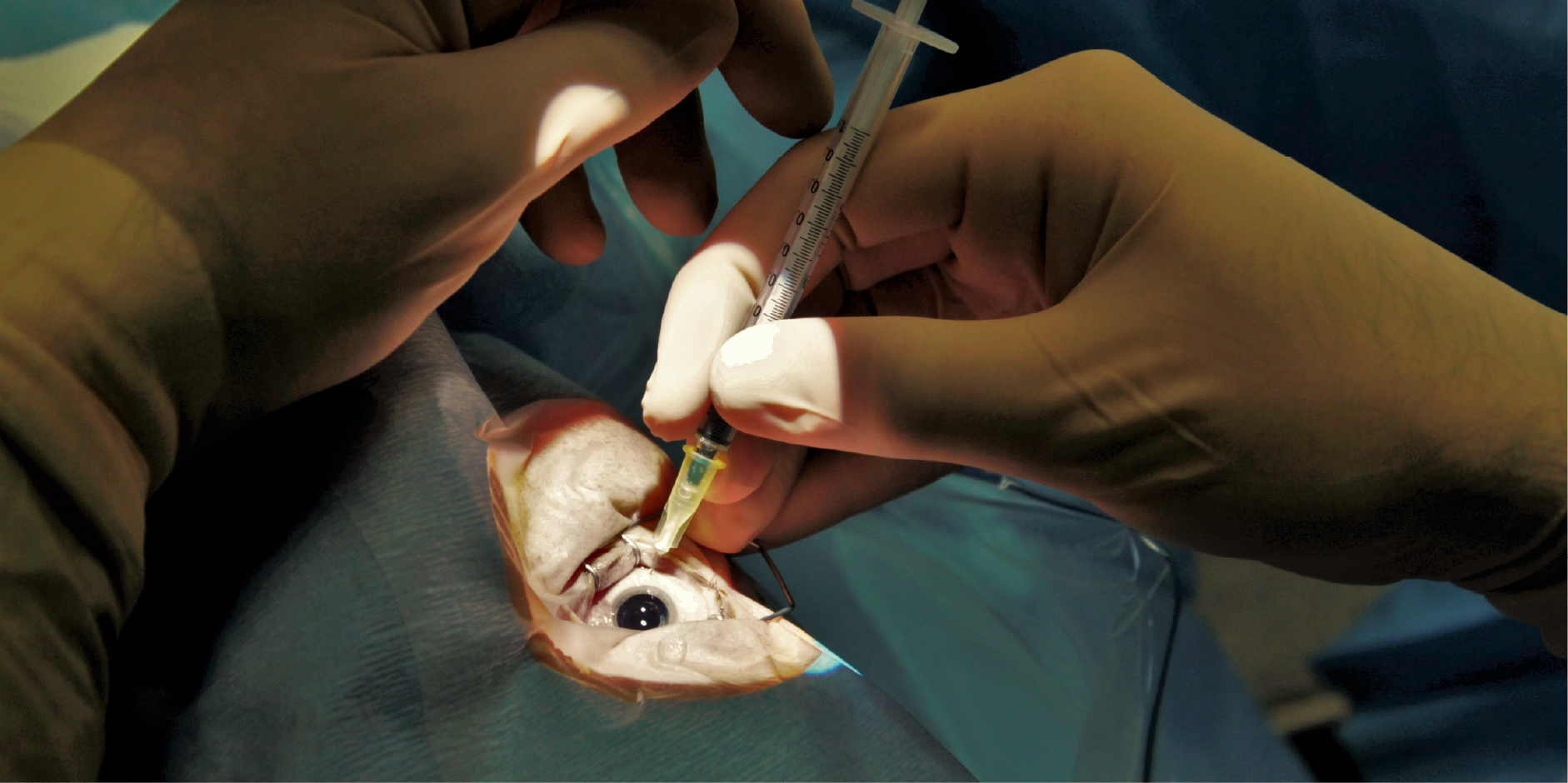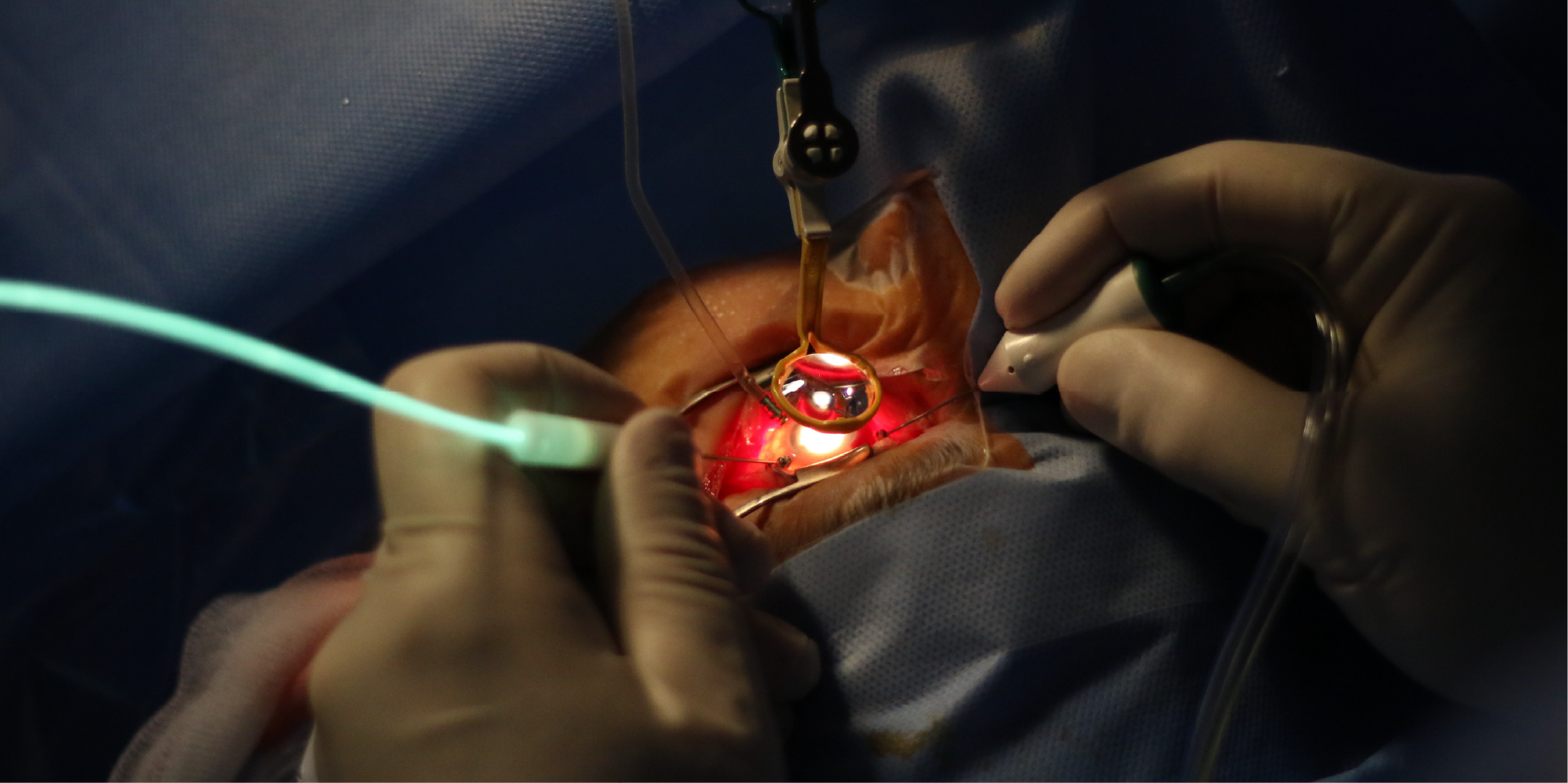Content on this page:
Content on this page:
Evaluation
Level of Urgency of Referral Criteria
Within 4 weeks a referral is advised if there are:
- Unexplained drop in visual acuity
- Hard exudates within 1 disc diameter of the fovea
- DME
- Pre-proliferative or moderate nonproliferative diabetic retinopathy
Within 1 week a referral is advised if the following are present:
- New vessels
- Preretinal hemorrhages
- Vitreous hemorrhages
- Rubeosis iridis
Emergency referral within the day should be done when the following are
found:
- Sudden, severe visual loss or
- Signs suggesting retinal detachment
Principles of Therapy
Treatment of diabetic retinopathy should be individualized. The treatment options and follow-up interval for diabetic retinopathy are based on the types and severity of diabetic retinopathy and the presence and type of DME. The goals of therapy include improving or stabilizing visual function, preserving vision, reducing the rate of disease progression and the frequency of retinopathy, vitreous hemorrhage and macular edema, improving or stabilizing vision-related quality of life, and achieving optimal control of blood glucose, blood pressure, and other metabolic risk factors.
Pharmacological therapy
Intravitreal Anti-Vascular Endothelial Growth Factor (Anti-VEGF)
Example drugs: Aflibercept, Bevacizumab, Ranibizumab
Studies show that anti-VEGF inhibits the increase in retinal vascular
permeability, which is mediated in part by protein kinase C. This reduces the
progression of disease and preserves visual function in patients with DME. It
is the preferred initial treatment option for patients with center-involved DME
without evidence of macular traction. Meta-analysis has shown that Aflibercept
and Ranibizumab have superior efficacy for DME compared to conventional laser
therapy. Anti-VEGF therapy may also be considered for proliferative diabetic
retinopathy in patients with vitreous hemorrhage or cataracts, which prevents the
use of panretinal photocoagulation (PRP). Combined anti-VEGF therapy and PRP
should be considered for patients with proliferative diabetic retinopathy and
concurrent center-involved DME. An initial saturating dose of anti-VEGF with
subsequent proliferative diabetic retinopathy provides better stabilization of proliferative
diabetic retinopathy and improvement of visual acuity compared to PRP alone.
Additionally, anti-VEGF therapy prevents the risk of complications that
accompany PRP. A meta-analysis has shown that anti-VEGF therapy before
vitrectomy may reduce the duration of surgery, the number of retinal breaks,
and the amount of intraoperative bleeding. Preoperative or intraoperative use
of Bevacizumab has been shown to decrease the incidence of postoperative
vitreous hemorrhage.
 Diabetic Retinopathy_Management 1
Diabetic Retinopathy_Management 1Aflibercept
Aflibercept is a recombinant fusion protein that binds to VEGF-A and VEGF-B, thereby preventing the activation of VEGF receptors 1 and 2. It has been shown to provide the best treatment outcomes over 1 year in patients with center-involved DME who have a visual acuity of ≥20/50. The DME and VEGF Trap-Eye: Investigation of Clinical Impact (DA VINCI) study showed better treatment outcomes in patients with center-involved DME who received Aflibercept compared to those who underwent laser treatment. A study has shown that Aflibercept may have superior visual acuity outcomes compared to PRP in patients with proliferative diabetic retinopathy without center-involved DME.
Bevacizumab and Ramibizumab
Bevacizumab and Ranibizumab are recombinant humanized antibodies. Studies have shown that these drugs reduce OCT macular thickness, decrease the activity and severity of proliferative diabetic retinopathy, and improve visual acuity (1–2 lines on a Snellen chart). They have shown similar treatment outcomes as Aflibercept by 2 years in patients with center-involved DME with visual acuity of ≤20/40.
Bevacizumab is used off-label for diabetic retinopathy treatment. The Bevacizumab or Laser Treatment (BOLT) study in the management of DME showed better outcomes in patients with center-involved DME who received Bevacizumab compared to those who underwent macular laser treatment. It has also been used as an adjunctive treatment to vitrectomy to minimize postoperative complications such as recurrent hemorrhage.
Ranibizumab is currently used for the treatment of DME. It has been shown to be more effective than Bevacizumab in reducing retinal thickening. The Ranibizumab for Edema of the Macula in Diabetes-2 (READ-2) study showed better treatment outcomes for patients receiving Ranibizumab, with or without laser therapy, compared to laser alone. The RIDE and RISE trial has shown that Ranibizumab improved the severity of all types of diabetic retinopathy, with the greatest benefit observed in patients with moderately severe to severe nonproliferative diabetic retinopathy.
Intravitreal Corticosteroids
Intravitreal Dexamethasone Implant
Intravitreal Dexamethasone implant is a treatment option for adult patients with DME. A study has shown that it can improve visual acuity in patients with treatment-naive center-involved DME. Additionally, studies have shown that intravitreal Dexamethasone implant improves vision and vascular leakage in vitrectomized patients with DME.
Intravitreal Fluocinolone Implant
Studies have shown that intravitreal Fluocinolone implant reduce neovascularization and retinal inflammation and may restore the integrity of the blood-retina barrier by increasing tight-junction protein expression. It may be used as a second-line treatment option for patients with DME. However, it may cause increased IOP, cataract formation, and endophthalmitis.
Intravitreal Triamcinolone Acetonide (IVTA)
Studies showed that IVTA inhibits VEGF-induced breakdown of the blood-retinal barrier. While studies show that IVTA resulted in some reduction of macular edema, its long-term efficacy (2 years) was not as good as focal laser photocoagulation. It is also used in visualization during vitrectomy. It may be considered for patients with center-involved DME with persistent retinal thickening after 24 weeks of anti-VEGF treatment. It may also be considered in patients with refractory DME. IVTA is currently under investigation for use in DME that persists following focal or grid laser treatment, in cases of extensive macular hard exudate deposition, and as an adjunct to PRP in the treatment of proliferative diabetic retinopathy. Possible complications include increased IOP and cataracts.
Nonpharmacological
Patient
Education
Patients should be educated on how to recognize visual symptoms (eg vision
changes, floaters, distortion, redness, or pain) that could be manifestations
of disease progression; they should be advised to consult their ophthalmologist
immediately if these symptoms occur.
Advise DM patients to:
- Have strict glycemic control as risk of developing diabetic retinopathy at 10 years is higher in those with FBS of 10 mg/dL and HbA1c >7%
- Be compliant with antihypertensive drugs to maintain a systolic blood pressure of <130 mmHg
- Control serum lipid levels with proper diet and to prescribe antidyslipidemic medications
- Have regular eye exam
- Exercise regularly
- Avoid alcohol intake and smoking
 Diabetic Retinopathy_Management 2
Diabetic Retinopathy_Management 2Surgery
Laser Photocoagulation
Laser photocoagulation is the standard technique for treating diabetic retinopathy that aims to reduce the risk
of visual loss. Retrobulbar or peribulbar injections can be used with laser
photocoagulation techniques.
 Diabetic Retinopathy_Management 3
Diabetic Retinopathy_Management 3Focal or Grid Laser Photocoagulation
Focal or grid laser photocoagulation applies small-sized burns to leaking microaneurysms in the macula in order to reduce plasma leakage responsible for intraretinal swelling. It decreases the risk of moderate vision loss in patients with CSME and increases those of partial to complete resolution of DME compared to no intervention at 1-3 years. The procedure is painless and takes <10 minutes to perform under topical anesthesia. It is indicated for patients with diabetic retinopathy and CSME; preferably done prior to PRP in patients with DME, with severe nonproliferative diabetic retinopathy, and non-high-risk proliferative diabetic retinopathy. It may be considered as an initial therapy for poorly compliant patients with DME or as an adjunctive therapy for those patients unresponsive to or show incomplete response to anti-VEGF treatment. It is the preferred treatment option for patients with noncenter-involved DME. It may also be considered in cases of center-involved DME with persistent retinal thickening after 24 weeks of anti-VEGF treatment. Complications of focal or grid laser photocoagulation include laser scars that tend to increase with time, paracentral scotomas, accidental foveal photocoagulation, choroidal neovascularization, and subfoveal fibrosis.
Panretinal or Scatter Laser Photocoagulation
Panretinal or scatter laser photocoagulation applies hundreds of laser burns to the peripheral retina to reduce the ischemic retina that brings about angiogenesis. It is the primary treatment for proliferative diabetic retinopathy and is recommended for patients with type 2 DM who have severe nonproliferative diabetic retinopathy or non-high-risk proliferative diabetic retinopathy, before the development of high-risk proliferative diabetic retinopathy. This reduces the risk of severe vision loss in severe nonproliferative diabetic retinopathy and proliferative diabetic retinopathy. PRP may also be performed in patients with CSME; Anti-VEGF therapy and/or focal anticoagulation before concomitant with PRP must be performed when evidence suggests exacerbation of macular edema and increase rate of moderate visual loss with PRP alone. Indications for PRP include high-risk proliferative diabetic retinopathy, rubeosis with or without neovascular glaucoma, moderate to severe neovascularization not involving the optic disc, widespread retinal ischemia and capillary non-perfusion, proliferative diabetic retinopathy during pregnancy, and preproliferative retinopathy in the second eye with severe proliferative diabetic retinopathy in the other eye. It may also be considered in patients with severe nonproliferative diabetic retinopathy or non-high-risk proliferative diabetic retinopathy who are at high risk of progression to high-risk proliferative diabetic retinopathy or with poor follow-up compliance.
Additional PRP or anti-VEGF therapy may be performed in the following conditions: Neovascularization fails to regress, increasing neovascularization of the iris or retina, new vitreous hemorrhage, and new areas of vascularization.
Complications of panretinal or scatter laser photocoagulation include:
- Pain during treatment
- Transient increases in IOP
- Corneal abrasions
- Mydriasis due to damage of nerves in the uveal tract
- Macular edema
- Visual acuity and/or field loss
- Loss of dark adaptation
- Decreased or compromised accommodation
- Choroidal detachment or hemorrhage
- Exudative retinal detachment
- Subretinal neovascularization
- Vascular occlusions
- Lens opacities
- Vitreous hemorrhage from regression of neovascular tissue
Reduction
of complications may be achieved by reducing the duration of laser impulses
from tens of microseconds to hundreds of nanoseconds.
Vitrectomy
Vitrectomy
is a surgical procedure involving the removal of the vitreous gel, blood, and
fibrovascular tissue from the eye. It has been shown to restore useful vision
in cases of non-resolving vitreous hemorrhage and traction retinal detachment of
the macula. It is a treatment option for advanced diabetic retinopathy. It has
shown to increase vision-related quality of life in patients with proliferative
diabetic retinopathy. It is also a treatment option for persistent diabetic
retinopathy despite optimal medical therapy with anti-VEGF or PRP or in
patients with diabetic retinopathy that is not manageable with pharmacological
therapy alone.
Indications
of vitrectomy include:
- Severe 1-≥3 months duration non-clearing vitreous hemorrhage
- Severe proliferative diabetic retinopathy or chronic or diffuse DME not responding to aggressive and extensive PRP
- Proliferative diabetic retinopathy and vitreous opacities that interfere with vision or treatment
- Traction retinal detachment recently involving the macula
- Combined traction and rhegmatogenous detachment
- Progressive fibrovascular proliferation
- Dense pre-macular subhyaloid hemorrhage
- Rubeosis iridis and vitreous hemorrhage with opacity preventing adequate laser
Vitrectomy
may also be considered in patients with center-involved DME with vitreoretinal
traction and with persistent retinal thickening after 24 weeks of anti-VEGF
therapy, as well as for treatment-naive proliferative diabetic retinopathy
patients with vitreous opacities and active neovascular or fibrovascular
proliferation. Pars plana vitrectomy may improve visual acuity in selected
patients with diffuse CSME unresponsive to previous macular laser
photocoagulation and/or anti-VEGF therapy. Potential complications of
vitrectomy include recurrent vitreous hemorrhage, endophthalmitis, glaucoma,
retinal tear or detachment, rubeosis iridis, and premature development of
cataracts.
 Diabetic Retinopathy_Management 4
Diabetic Retinopathy_Management 4